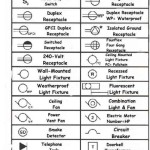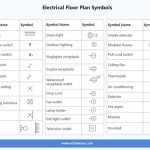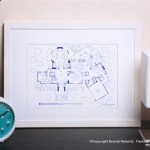Bi-Level House Plans of the 1970s: A Retrospective on Design and Function
The 1970s marked a significant period in American residential architecture, characterized by experimentation with form and function. Among the diverse architectural styles that emerged, the bi-level house, also known as a split-level or raised ranch, gained considerable popularity. This design offered a unique approach to space utilization, addressing the needs of growing families and the desire for distinct living zones. This article explores the defining characteristics, advantages, disadvantages, and lasting legacy of bi-level house plans from the 1970s.
Bi-level houses are identified by their staggered floor arrangement, typically featuring two main levels split by a short set of stairs. The entrance level usually contains a foyer, a partial basement, and often a garage. Ascending a half-flight of stairs leads to the main living areas, including the living room, dining room, and kitchen. Descending a similar flight of stairs provides access to bedrooms and bathrooms. This design effectively separates the public and private spaces while maintaining a relatively compact footprint.
The rise of the bi-level house in the 1970s can be attributed to several factors. Increased affordability was a primary driver, as the simplified foundation and efficient use of space resulted in relatively lower construction costs compared to traditional two-story homes. The design also appealed to families seeking a modern aesthetic and a degree of separation between living and sleeping areas. Suburban expansion further fueled the demand for this type of housing, as developers sought efficient and cost-effective ways to accommodate the growing population.
Key Advantages of 1970s Bi-Level Home Designs
Bi-level homes offered several distinct advantages, contributing to their widespread popularity during the 1970s. One of the most significant benefits was their efficient use of space. The staggered floor plan allowed for a relatively large living area on a smaller plot of land compared to sprawling ranch-style homes. This was particularly appealing in densely populated suburban areas where land prices were high.
Cost-effectiveness was another major draw. The simplified foundation and straightforward construction methods resulted in lower building costs, making bi-level homes more accessible to a wider range of homebuyers. The reduction in materials and labor hours translated to significant savings, which were often passed on to the consumer.
The separation of living areas was also a key selling point. By placing the bedrooms on a separate level, bi-level homes provided a degree of privacy and noise reduction. This was particularly beneficial for families with young children or those who valued a quiet and relaxing environment in their sleeping quarters. The separation also allowed for distinct functional zones within the home, catering to different activities and lifestyles.
Furthermore, the raised foundation afforded some protection against flooding, a concern in certain geographical areas. The elevation of the main living area above ground level minimized the risk of water damage in the event of heavy rainfall or localized flooding. This was an important consideration for homeowners in flood-prone regions.
Common Characteristics of 1970s Bi-Level Floor Plans
Bi-level house plans from the 1970s typically shared several common characteristics. The exterior design often featured simple, rectangular shapes with minimal ornamentation. Siding materials varied, but common choices included wood siding, brick veneer, and aluminum siding. Large picture windows were frequently incorporated to maximize natural light and provide views of the surrounding landscape.
The interior layout generally consisted of a foyer at the entrance level, leading to a short staircase. The upper level housed the main living areas, including a living room, dining room, and kitchen. The kitchen was often located at the rear of the house, overlooking the backyard. The lower level typically contained bedrooms, bathrooms, and sometimes a recreation room or family room.
Finished basements were also a common feature, providing additional living space for storage, hobbies, or entertainment. Many bi-level homes also included an attached garage, conveniently located at the entrance level. The garage often provided direct access to the foyer, allowing for easy entry and exit, especially during inclement weather.
Lot orientation played a significant role in the design of bi-level homes. The raised foundation often took advantage of sloping lots, allowing for a walk-out basement and maximizing natural light in the lower level. This was particularly beneficial in areas with uneven terrain, where traditional foundation designs might have been more challenging or expensive to implement.
Disadvantages and Criticisms of Bi-Level Designs
Despite their popularity, bi-level homes also faced several criticisms. One common complaint was the perceived lack of flow between the upper and lower levels. The short flight of stairs separating the two zones could feel disconnected, hindering social interaction and creating a sense of isolation between family members.
The often-small foyer was also a point of contention. The limited space at the entrance could feel cramped and unwelcoming, especially during gatherings or when multiple people were entering or leaving the house simultaneously. This bottleneck effect could detract from the overall sense of spaciousness and comfort.
Aesthetic concerns were also frequently raised. The boxy exterior design and limited architectural details were often criticized as being bland and uninspired. The lack of visual interest and the repetitive nature of the design could contribute to a sense of monotony and uniformity within a neighborhood.
Furthermore, the bi-level design presented challenges for accessibility. The short flight of stairs between levels could be difficult or impossible for individuals with mobility impairments to navigate. This limited accessibility made bi-level homes less suitable for older adults, people with disabilities, or families with young children.
Energy efficiency was another area of concern. The large surface area of the exterior walls and the potential for air leakage around the foundation could lead to higher heating and cooling costs. Inadequate insulation and poorly sealed windows could further exacerbate these issues.
Finally, remodeling and renovation could be complex and costly. The unique structural design of bi-level homes often presented challenges for modifying the floor plan or adding new features. Altering load-bearing walls or reconfiguring the staircase required careful planning and specialized expertise, adding to the overall cost of the project.

1970 Craftsman Style House Plans Split Level With Pictures

1970s Typical Building Form Split Level Floor Plans House Design

1970s Tri Level House Plans Split Floor

Beautiful Tri Level House Plans 8 1970s Home Split Floor

Vintage House Plans Multi Level Homes Part 17 Modern

The Unique Shapes Of Minto S Back Split Designs In 60s And 70s

A 1970s Bi Level Or Split Remodeling Advice Guide Degnan Design Build Remodel
Architecture Split Level Houses Why Cyburbia Urban Planning Placemaking And More

Untitled Mid Century Modern House Plans With Pictures Vintage

Once A Staple Of The 1970s Split Level Homes Are Back In Vogue Inman








